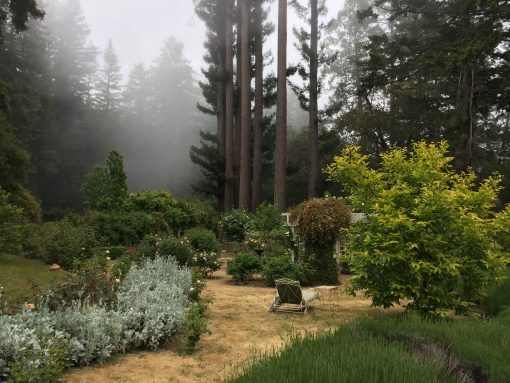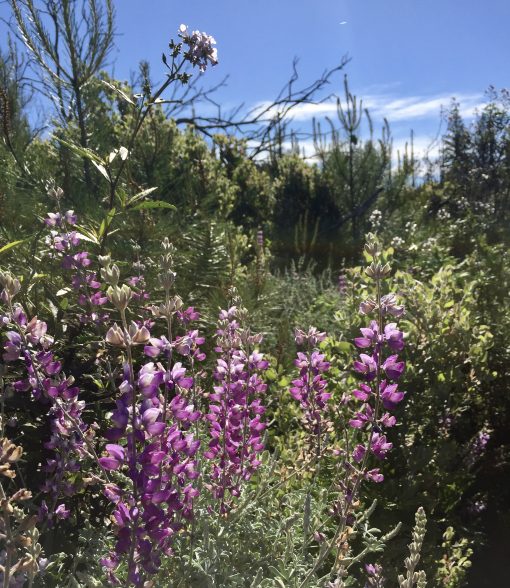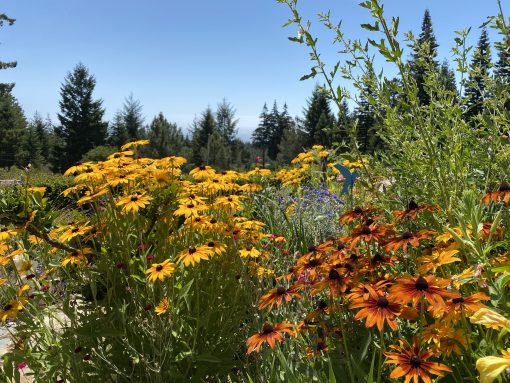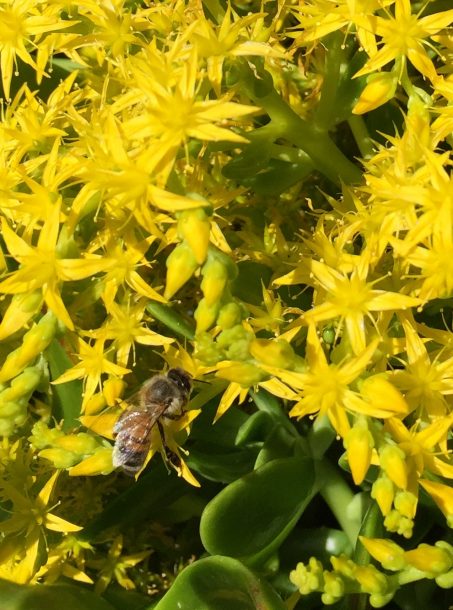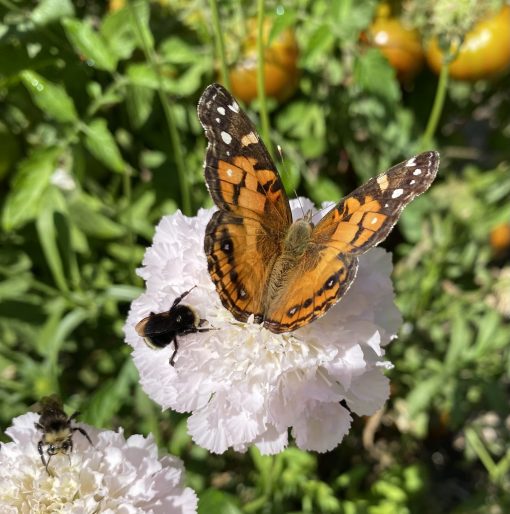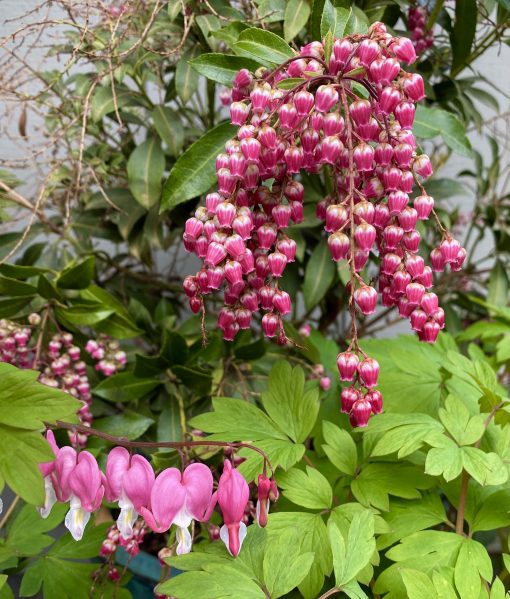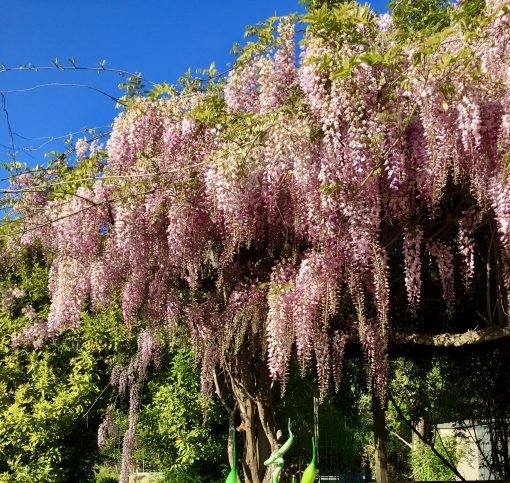
Every spring when the dogwoods, lilac and wisteria bloom I get excited. Not having room myself for these beauties I visit friend’s gardens often. Seems everything is flowering now- lavender, salvia, protea, ceanothus, lily-of-the-valley shrub, bleeding hearts, coral bells, grevillea, camellia, abutilon and more. Here are some of my favorites from the past week.
A hike at Quail Hollow is always a treat. The native bleeding heart ground cover (dicentra formosa) greeted me with hundreds of flowers as I started to hike. Along the trail the white Pacific Coast Iris (iris fernaldii) stood out alongside the sky lupine. Stunning Silver Bush lupine made quite the show in the dry, sandy soil.
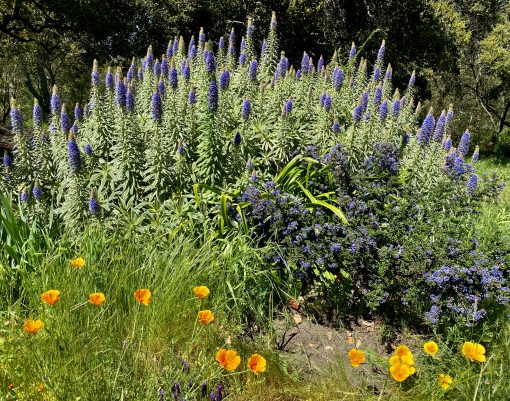
Later in the week I admired a Variegated Star of Madeira (echium candicans) at my friend Joy’s house. Because she’s a landscape designer she had planted in a spot that receives little water while attracting bees and butterflies and controlling erosion on the hillside. It was breathtaking being in full bloom alongside a Julia Phelps ceanothus with a few California poppies thrown in for color.
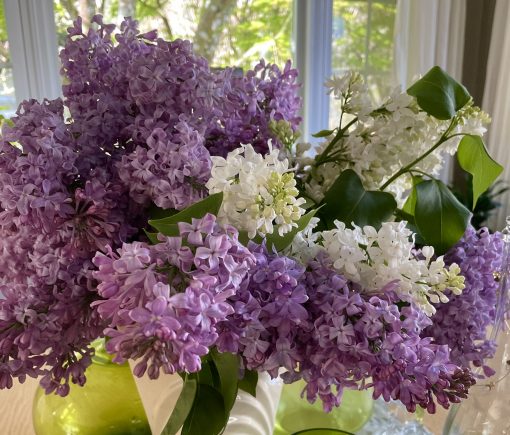
The next garden I visited belonged also to another fellow designer. Cathleen’s piece of paradise always has something in bloom and this day did not disappoint. Lilacs scented the air. She has some in several colors from classic lilac to pink to white. Her hellebores were still blooming and she has quite a collection now including the varieties with double blossoms as well as upward facing flowers. I’m waiting for her Ghostly Princess Spanish lavender to start blooming. Last year it was gorgeous.
You can’t drive anywhere these days without encountering dogwoods and wisteria in full bloom. Wisteria are long lived and can grow quite large as you probably know if you have one. When you see one growing up a redwood and it’s reached over 50 feet it’s impressive. There is one that is smaller and easier to maintain. Perfect for smaller spaces Amethyst Falls blooms at an early age with lightly fragrant purple racemes weeping gracefully downward. You can use it in a container on the porch or patio or train it up an arbor or trellis. It repeat blooms lightly in the summer. Twining stems quickly reach 8 to 10 feet.
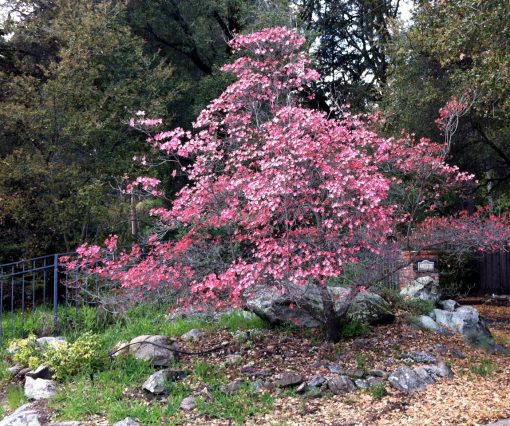
I love white dogwoods. Cherokee Princess just pop with their snow white blooms in our mixed forest. But it’s the pink ones that get to me. There is a big Eastern dogwood on the road I used to live on in Bonny Doon that survived the fire. It doesn’t get any water anymore but still manages to bloom. Talk about being a survivor. I really like the rose red flowers of the Cherokee Brave variety. After the beautiful flowers in the spring it gets vibrant red berries that feed the birds. In the fall the leaves turn crimson.
Dogwoods attract a variety of wildlife. All sorts of critters use this tree for food and shelter. The giant silk moth and several species of butterflies favor dogwoods as host plants. The spring flowers provide nectar to bees and other pollinating insects. Robin and sparrow are just two of the bird species that build nests on the horizontal branches and many others seek shelter in the leaves. The high calcium, high fat, fleshy red fruits are eaten by 35 species of birds including titmice, juncos and waxwings.
And remember that dogwood are a good tree choice for the allergy sufferer as their pollen is not wind borne. Their showy flowers, which are actually bracts, are pollinated by insects. Their pollen is large and heavy, sticking to insects rather than becoming airborne and leading to sneezing, runny noses and watery eyes.
This is turning out to be an incredible spring. Get out and enjoy it.


